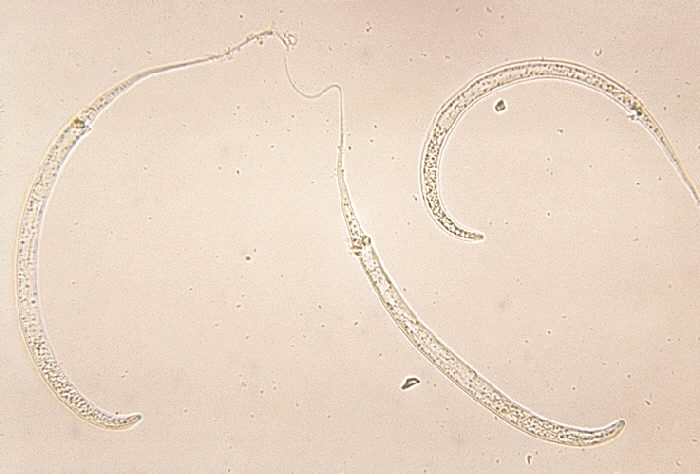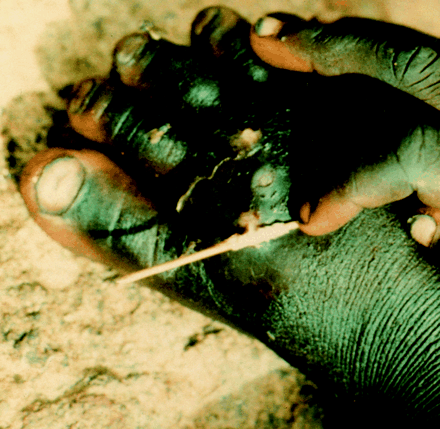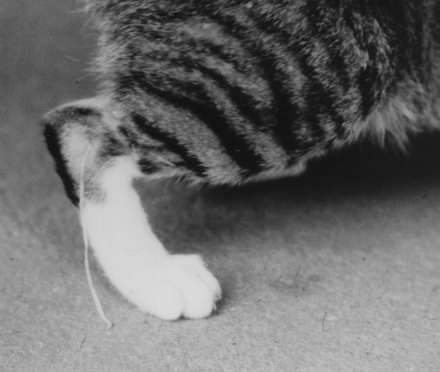Interactions
D. medinensis is an infectious parasite for most of its life cycle and only exists as a mature worm in a host. Because of this, it lives most of its life within hosts and engages in parasitic interactions within the hosts. As a L1 larva, it is ingested by freshwater copepods. There are many species of freshwater copepods that could be infected in endemic regions. The main endemic countries that are focused on for D. medinensis transmission are South Sudan, Ethiopia, Chad, and Mali (Eberhard et al. 2014). A study that was conducted over 17 months starting in 1990 found four different species of copepods, M. kieferi, T. n. decipiens, T. inopinus, and T. incisus, were infected by D. medinensis (Yelifari et al. 1997). Copepods that are infected by the L1 larvae stage serve as a host so the L1 larvae can grow into the third stage larvae (L3). Mammalian hosts are infected once the copepods with the L3 larvae are eaten (Foster et al. 2014). The main host this parasitic nematode infects is humans but dogs have also been reported to being infected by D. medinensis worms (Eberhard et al. 2014). Other mammalian species such as domesticated cats have also been reported (Wijová, Moravec, Horák, Modrý and Lukeš 2005; Muller 1971).
Humans and dogs are both affected in the exact same fashion where adult worms mate. The female worms then migrate to subcutaneous tissues. The female grows and gets its nutrition from inside the human or dog body. The infected host does not know it is infected because the worms secrete opiates to stop pain and coat themselves in human proteins that avoid detection by the immune system (Yusuf 2011). Once the blister opens, the burning sensation causes the human host to seek cool water to cool the blistered area. This exposure to water causes the female worm to emerge and release the first stage larvae into the water source (Yusuf 2011).
Besides the parasitic and pathological effects on humans, D. medinensis has other effects on humans that affect quality of life. Specifically, the disease affects the ability of infected individuals to perform work and daily tasks. Children who are infected cannot attend school and working adults cannot complete farming activities due to pain and weakness (Yusuf 2011).
Although the first stage larvae are ingested by copepods, they do not provide food for the copepods. Instead they use copepods to grow into an infectious larval stage. D. medinensis also does not serve as a host for other organisms. Within a food web, D. medinensis is a parasite that affects a high level consumer, humans. With no predators and minimal competition within hosts, D. medinensis is a very efficient parasite. Currently, there is no applicable vaccine that can prevent the Guinea Worm Disease, there are no drugs to treat the disease once an individual is infected, and there is no immunity to re-infection (Yusuf 2011).
Previous Page: Reproduction
Next Page: Facts



